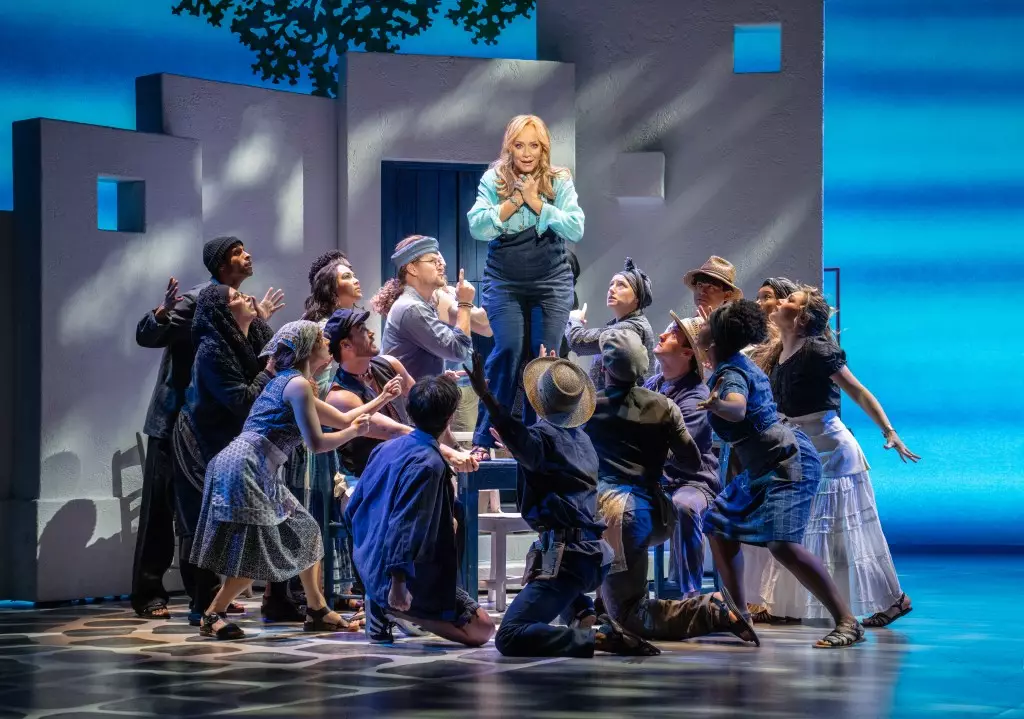Despite what headlines might suggest, the recent Broadway performance figures reveal a sobering reality: the theater district, often perceived as Hollywood’s more classy sibling, is struggling beneath its glamorous veneer. The launch of *Mamma Mia!* at the Winter Garden Theatre with sold-out previews is an encouraging note, yet it conceals a more pervasive trend of sluggish attendance and declining revenues across most shows. The bright spot on the horizon shouldn’t overshadow the stark truth—the industry still grapples with ignoring its structural weaknesses and the shifting cultural landscape that no longer guarantees Broadway’s unwavering dominance.
The Illusion of Growth in Elite Shows
While blockbuster staples like *Wicked* and *Hamilton* maintained impressive earnings, their figures only serve as proof that a select few shows still draw huge crowds. For every hit, there are many productions languishing with less than optimal turnout, some even struggling with around 56-67% capacity. This disparity underscores a critical reality: Broadway is no longer a broad-based industry but one heavily skewed toward a handful of top-tier productions. For the majority of shows, signs of economic fragility are clear, reflecting broader issues such as changing entertainment consumption habits, rising ticket prices, and a cultural shift that favors more diverse and global media options.
Ticket Pricing and Consumer Fatigue
The high price of tickets—averaging nearly $127—further alienates potential audiences. With some shows charging over $230, there’s a widening gap between the perceived value and the average consumer’s disposable income. The phenomenon of “tourist pricing” exacerbates the issue, especially as many potential theatergoers in New York are increasingly priced out, leading to a decline in local attendance. This economic pressure fuels ticket buyers’ fatigue, particularly in the summer months when public interest wanes but costs remain high. The industry’s reliance on “big name” shows and premium pricing cannot be sustained in the long term without risking customer disenfranchisement.
Surface-Level Success and the Myth of a Rebound
Gazing at gross figures like $30 million weekly and a 10% year-over-year increase might seem promising, but these numbers are more reflective of a small, affluent elite rather than a broad, healthy revival. The fact that most shows saw attendance dips at the same time indicates that the industry is merely riding on the strengths of the most commercially viable productions. Underneath, there are genuine vulnerabilities—less popular shows are barely scraping by, and the overall decline in attendance highlights waning public interest. The narrative of a “resurgent Broadway” is overly simplistic; without addressing underlying access and affordability issues, these numbers are little more than temporary band-aids.
The Cultural Shift and the Industry’s Myopia
Broadway’s inability to adapt to modern digital entertainment trends is also a concern. The industry often clings to traditional metrics of success—ticket sales, gross revenue—without considering changing consumer preferences or the role of streaming and digital media. Meanwhile, the elite shows continue to dominate the conversation, reinforcing a cycle that sidelines innovative, diverse, or niche productions that might otherwise broaden the appeal of Broadway. In many ways, Broadway remains a cultural gatekeeper resistant to change, risking irrelevance in a rapidly evolving media landscape.
Political and Economic Implications
As a center-right liberal, one might argue that Broadway’s challenges reflect broader economic and political issues—inequality, urban affordability, and a disconnect between cultural elites and the average citizen. While government and private sector efforts have attempted to bolster the arts through subsidies and tax incentives, these do little to address the core issues of accessibility and relevance. The industry’s survival depends not merely on nostalgia or star power but on embracing reforms that democratize access and foster genuine artistic innovation, rather than relying on a narrow commercial model that favors proven hits at the expense of experimental or socially relevant works.
In essence, Broadway’s recent financial reports are a clear wake-up call. The industry must confront its over-reliance on legacy hits and exclusivity, and recognize that the entertainment landscape has fundamentally changed. Recognition that economic inequality impacts theater attendance, that consumers are increasingly discerning and value-oriented, and that cultural relevance requires innovation and inclusivity is vital. Without strategic reforms—both fiscal and cultural—Broadway risks slipping further into irrelevance, a relic of its golden age rather than the thriving cultural hub it aspires to be.

